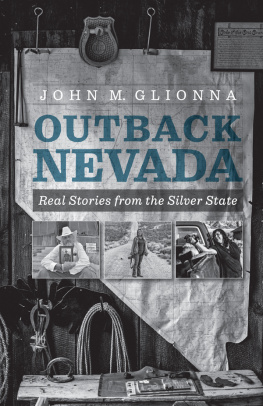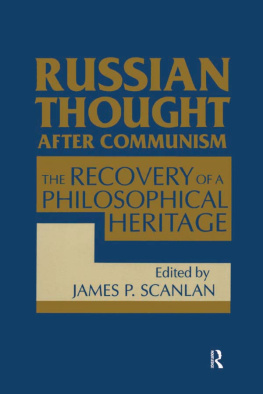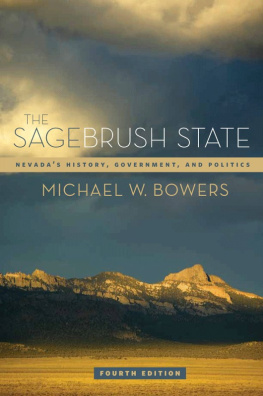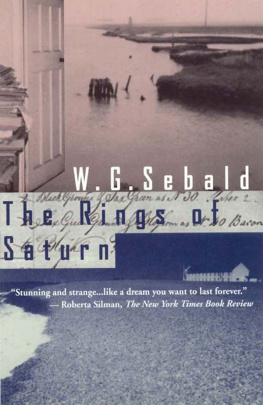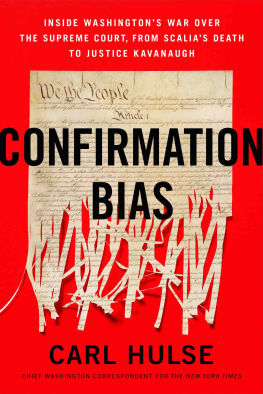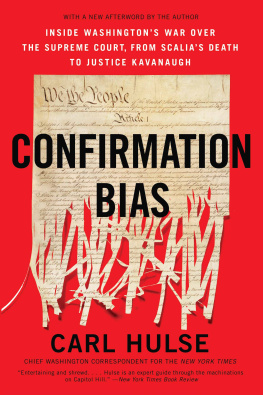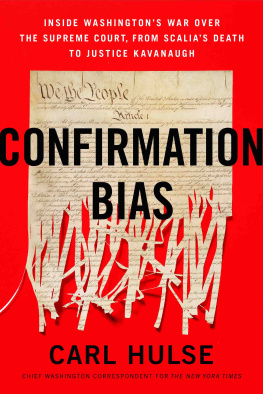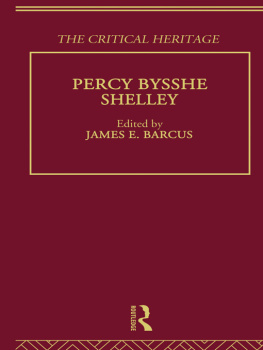Wilbur S. Shepperson Series in
History and Humanities
Wilbur S. Shepperson Series in History and Humanities
Series Editor: Jerome E. Edwards
Initial publication of this book was funded in part by the Nevada 125th Anniversary Commission.
The Library of Congress has cataloged the second edition as follows:
Hulse, James W.
The silver state : Nevada's heritage reinterpreted / James W. Hulse 2nd ed.
p. cm. (Wilbur S. Shepperson series in history and humanities)
Includes bibliographical references and index.
ISBN 0-87417-318-3 (pbk. : alk. paper)
1. NevadaHistory. I. Title. II. Series.
F841.H83 1998
979.3dc21 98-21770
CIP
University of Nevada Press, Reno, Nevada 89557 USA
Copyright 1991, 1998, 2004 University of Nevada Press
Designed by Kaelin Chappell
Printed in the United States of America
ISBN-10: 0-87417-592-5
ISBN-13: 978-0-87417-592-9
ISBN-13: 978-0-87417-720-6 (ebook)
Preface
MORE THAN twenty-five years ago, when the University of Nevada Press was in its infancy, its founders asked me to prepare a general history of the state for use in the public schools because the only textbook available at that time was a quarter century old and was thought to be inadequate for the needs of that generation. I wrote The Nevada Adventure: A History and tried to make it adaptable for various levels of classroom use. About three years ago, the staff of the press convinced me that the time had come to attempt yet another generalized history of the state: one which explores the more remote corners, which tries to do justice to the southern regions that might have been previously neglected, and which puts the events of the last fifty years into a tidy conceptual framework.
The approach of the 125th anniversary of Nevada's statehood (1989) prompted this effort, in much the same manner that the approach of the centennial (1964) encouraged the writing of The Nevada Adventure. The work of a score of scholars has surfaced since that centennial year. Among the most impressive is the scholarship of Russell R. Elliott, teacher and colleague to three generations of Nevada students and scholars. He has explored the spectrum of Great Basin history with a thoroughness that no person, with the possible exception of Leonard Arrington of Utah, has ever done; Elliott has pre-empted the western half of the basin, and Arrington the Utah part, for the scholarly audience. They have, between them, surveyed the vast social landscape in the tradition of the classical historians and have given us a body of excellent historical analysis of Nevada and Utah for this generation. The ambitions of the present work are more narrowly focused.
There has been an avalanche of important new scholarly material on Nevada and its environment within the last few years, which is worth mentioning in a book for the general reader and students in the schools. The excellent series on the natural history of the Great Basin, published by the University of Nevada Press with the generous assistance of the Fleischmann Foundation, should be tapped for use in the historical community. The outstanding volume in the Handbook of American Indians series, edited by Warren d'Azevedo and published by the Smithsonian Institution, has brought the cultures of the Native Americans into better focus than ever before. There are also several new social interpretations of the peculiar social organism called Nevada.
It is assumed that there is room for a general updating that will condense the earlier periods into smaller scope and encourage more thorough study of recent developments, since so much has happened in and to Nevada during the past twenty-five years. Our population has nearly tripled, gambling activity has more than quadrupled, and the memory of the early period has faded even further into oblivion in the places that have grown most rapidly. We have drunk more deeply from the waters of Lethe here in Nevada than elsewhere. Our old mining towns, ranches, public buildings, and roads once faded gradually from the scene under the forces of time and weather. Now we bulldoze them. The work of trying to preserve our natural and historical heritage needs more energy and talent than have heretofore been available. Fortunately, there are more hands working these veins than ever before. Interest in the state history has increased within the past quarter century, much of it stimulated and cultivated by the Nevada Humanities Committee, the Nevada Arts Council, the Nevada State Historical Society and museum, the local museums and libraries, and many others.
In the present work, I have assumed that a reinterpretation is in order, one that is careful not to overemphasize the early mining frontier, squander too much time and prose on the politicians, and neglect the burgeoning southern communities. It is also assumed that the time has come for a fresh emphasis on women who have contributed to the social fabric, the changing institutional climate, and the social problems and challenges that emerged in the 1980s.
A state poor in resources but pretentious in ambitions, Nevada has fashioned for itself an unusual role in the American Union. Things are looser here, and they change more rapidly than in most parts of the country; society is more fluid, moral standards are more easily altered or abandoned, apologies for ethical aberration are more easily accepted. Perhaps this is one reason why the study of history is popular.
The history of this state has largely involved a minority of more-or-less permanent residents, who have tried to maintain a political and economic commonwealth in a largely inhospitable land, with a majority of short-term itinerants constantly passing through. Thousands of Nevadans of the modern era have something in common with those pioneers who erected trading stations in the early days along the Carson River or in the Las Vegas Valley in hopes of doing business with the emigrants. The commercial resources of the land are meager, yet they have attracted those frontiersmen and speculators who wanted to make their profits as quickly and efficiently as possibleand often have left the social and natural damage behind. Perhaps the new evidence that has accumulated in recent years is worthy of the attention of that growing minority who have chosen to be long-term Nevadans.
My intellectual debt to colleagues and friends grows ever larger as the years pass. The community of scholars and amateurs has undergone a quantum expansion in recent years. It is of course impossible to name all the librarians, members of the Westerners' Corral, journalists, writers of bureaucratic reports, curious and thoughtful buffs, and others who have contributed to the expanding reservoir of data and ideas. But in the evolution of this effort, the greatest responsibility goes to my long-term colleagues Russell R. Elliott, Wilbur Shepperson, Elmer Rusco, Jerome Edwards, and William Rowley, who are always ready with suggestions, arguments, and data when they are needed. Elmer and Mary Rusco have been most generous with information and suggestions about Native Americans. The recent book by Eugene Moehring from Las Vegas, Resort City in the Sunbelt, is the most important new addition to Nevada history in many years and has been indispensible.
Special thanks are due also the Alan Bible Center for Applied Research, and especially to Lorena Stookey, who did much to improve the prose of this text. With commendable diligence, Chris Ryan carried out the cartographic research and Nancy Peppin prepared the maps in their final form. Richard Adkins helped locate and select the photographs with his characteristic energy. Several other readers, some unknown to me, provided excellent criticism as referees for the University of Nevada Press. Cindy Wood of the press has applied her high professional standards as copy editor, to the great benefit of the manuscript. Tom Radko and Nicholas Cady, the press's director and editor in chief respectively, have shepherded the manuscript to completion with fine professional care. My former colleagues, Bob and Paule-Colette Fricke, provided the hospitality and facilitated the quiet hours for final editing in the tie de France, for which I will always be grateful.



